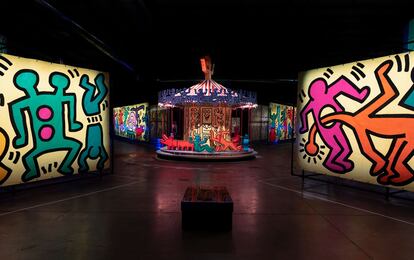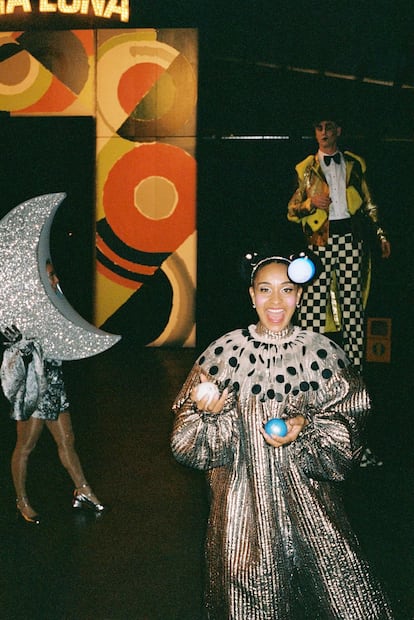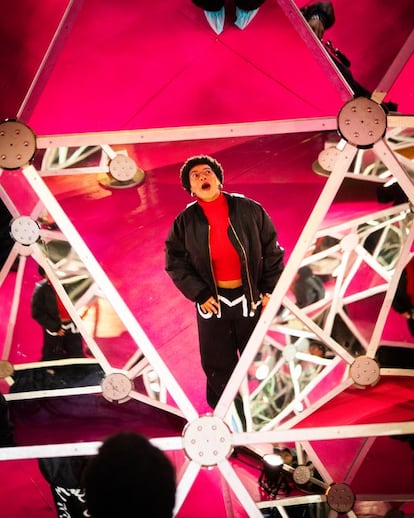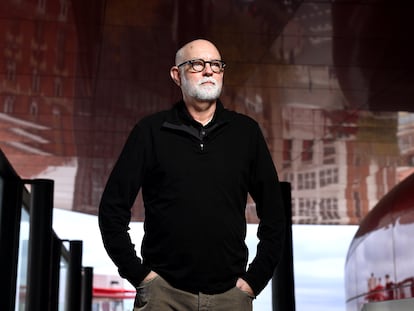The resurrection of Luna Luna, the amusement park designed by artists such as Dalí, Basquiat and Keith Haring
A traveling exhibition currently in New York showcases the original installations, restored after being in storage since 1987, with funding from rapper Drake


Thirty-eight years ago, the world’s first avant-garde amusement park opened in Hamburg, Germany: Luna Luna. It was an ode to freedom, art, and dreams, founded on the belief that art should be presented in unconventional ways, drawing in audiences who might not typically seek it out in more traditional settings. Conceived by Austrian artist André Heller, Luna Luna’s greatest allure and uniqueness lay in the fact that its attractions were also artistic installations, created by some of the most prominent artists of the time.
Luna Luna was an unprecedented, dream-like park, which was designed to be temporary and to travel around the world. From June 5 to August 31, 1987, it attracted around 300,000 visitors. As planned, the park closed at the end of the summer, with the idea of being reinstalled elsewhere. A plan to set it up in Balboa Park in San Diego, California, was derailed by an unforeseen event, leading to the cancellation of the contract. The park’s attractions, stored in 44 containers, were then transported to a warehouse in Texas, where they fell into oblivion.
Nearly four decades later, these attractions have been rescued and restored for a traveling exhibition, now on display at The Shed in New York until January 5, 2025, after previously stopping in Los Angeles. The driving force behind the revival of Luna Luna is Michael Goldberg, an American businessman and creative director, who became fascinated with the park’s history during the pandemic and was determined to bring it back to life. Goldberg secured funding through an unlikely source: rapper Drake, who — captivated by the story of Luna Luna — invested $100 million through his company, Dreamcrew, in partnership with Live Nation.
The restoration was a gamble, as the funding had to be paid without any certainty about the condition of the pieces or even what was inside the containers. Fortunately, while some of the attractions had suffered damage from rodents and the ravages of time, others were remarkably well-preserved. The complex, two-year-long reconstruction process was guided by photographs of the park taken by Sabina Sarnitz, which had been used to illustrate the 1987 catalog.
In 1987, André Heller’s budget was a modest €474,035 ($497,039), a tiny sum for a project of such ambition and scale. Nevertheless, he convinced the invited artists with a bold challenge: to return to their childhood memories and create their own vision of an amusement park without any limitations. All of them accepted. Jean-Michel Basquiat designed an 11-meter-high white Ferris wheel, featuring an image of a monkey’s backside in the center, and surprising words on each cabin, such as “Pornography,” “Standard,” “Bleeding Fingers,” “Chassis,” and “Crushed.” The Ferris wheel ran while the music of Miles Davis played in the background. Roy Lichtenstein designed a labyrinth of 75 crystals intended to disorient participants, with background music by Philip Glass.
Salvador Dalí's pavilion, named Dalidom, was a mirrored dome with an interior designed to reflect visitors in myriad ways, accompanied by music from the Blue Chip Orchestra. Keith Haring, meanwhile, created the park’s iconic carousel and designed the merchandising T-shirts. These are just a few of the standout examples of the park’s artistic offerings. But to truly evoke the sensory experience of Luna Luna, it’s important to remember that the magic of the park wasn’t only in the attractions, but also in the performances that brought it to life.
Thirty attractions
Among the thirty attractions that made up Luna Luna were stilt walkers and performers dressed as nuns, penguins, moons, and surreal creatures. Dancers roamed the park, inviting visitors to join them in spinning and dancing. It was a carnival, a party. The performances were as audacious as they were politically incorrect, including a flatulence concert that would surely raise eyebrows in today’s climate. True to Andy Warhol’s concept of “five minutes of fame,” visitors had the chance to have their photos taken with life-sized cardboard cutouts of icons like Einstein or Marilyn Monroe, or to transform into mythological figures by peeking their faces out from behind a centaur figure.
Luna Luna was a playground for the imagination, where everything had a place. André Heller even created a chapel where visitors could marry anyone — or anything —they desired, receiving an instant wedding certificate along with a photo. This subversive concept was particularly bold in 1987, when same-sex marriage was illegal in Germany, and the idea of marrying objects or pets was of course unthinkable.

The artistic freedom achieved in Luna Luna was the product of a fusion of artistic movements, ranging from abstract art and expressionism to art brut, pop art, surrealism, dada, the Fluxus movement, and Viennese actionism. The park’s creation was also influenced by the worlds of cabaret, burlesque, and the golden age of the circus.
Luna Luna can also be seen as a culmination of significant historical moments, including the premiere of Fantasia, the construction of the Watts Towers by Italian artist Simon Rodia without any institutional backing, and the founding of the Japanese avant-garde group Gutai. It also reflects the era’s social and cultural milestones: Rosa Parks’ refusal to give up her seat, the legendary Woodstock festival, the Stonewall riots, and the first hip-hop party in the Bronx. The park was inspired by transformative works like Philip Glass and Robert Wilson’s opera Einstein on the Beach, as well as monumental events such as humanity’s landing on the Moon, the first image of Earth from space, and the opening of the Pompidou Centre in France. Luna Luna draws from the boldness of John Waters’ Polyester, the public display of treasures from Tutankhamun’s tomb, and the iconic demonstration of one million people in New York protesting against nuclear weapons. It was also shaped by more personal feats, like French tightrope walker Philippe Petit’s daring, illegal crossing between the Twin Towers of the World Trade Center.

Unlike the original open-air experience of Luna Luna, today’s visitors won’t be able to ride the Ferris wheel or the carousel. However, they can still get married, explore some of the installations, interact with performers, and walk through a curated itinerary where the history of the world’s first art park is reconstructed through photographs, posters, and videos. It’s an opportunity to escape the constraints of politics, religion, and reality, and to gracefully return to the innocence of childhood.
Sign up for our weekly newsletter to get more English-language news coverage from EL PAÍS USA Edition
Tu suscripción se está usando en otro dispositivo
¿Quieres añadir otro usuario a tu suscripción?
Si continúas leyendo en este dispositivo, no se podrá leer en el otro.
FlechaTu suscripción se está usando en otro dispositivo y solo puedes acceder a EL PAÍS desde un dispositivo a la vez.
Si quieres compartir tu cuenta, cambia tu suscripción a la modalidad Premium, así podrás añadir otro usuario. Cada uno accederá con su propia cuenta de email, lo que os permitirá personalizar vuestra experiencia en EL PAÍS.
¿Tienes una suscripción de empresa? Accede aquí para contratar más cuentas.
En el caso de no saber quién está usando tu cuenta, te recomendamos cambiar tu contraseña aquí.
Si decides continuar compartiendo tu cuenta, este mensaje se mostrará en tu dispositivo y en el de la otra persona que está usando tu cuenta de forma indefinida, afectando a tu experiencia de lectura. Puedes consultar aquí los términos y condiciones de la suscripción digital.
More information
Archived In
Últimas noticias
Most viewed
- Sinaloa Cartel war is taking its toll on Los Chapitos
- Oona Chaplin: ‘I told James Cameron that I was living in a treehouse and starting a permaculture project with a friend’
- Reinhard Genzel, Nobel laureate in physics: ‘One-minute videos will never give you the truth’
- Why the price of coffee has skyrocketed: from Brazilian plantations to specialty coffee houses
- Silver prices are going crazy: This is what’s fueling the rally










































